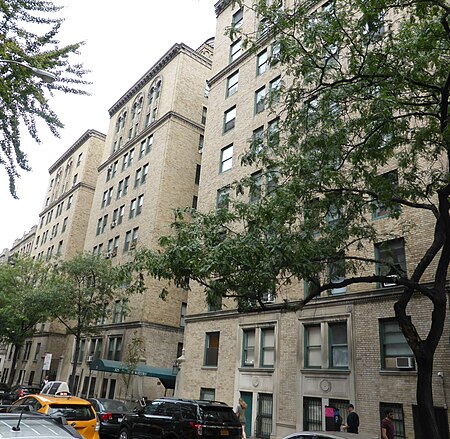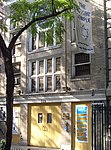The Whitby
Emery Roth buildingsHell's Kitchen, ManhattanResidential buildings completed in 1924Residential buildings in Manhattan

The Whitby is the name of the residential property at 325 West 45th Street in Hell's Kitchen, Manhattan, New York. The Whitby was designed by architect Emery Roth and built by Bing & Bing general contractors. It was originally commissioned as a hotel by The Gresham Realty Company in 1924 and opened for business on October 1, 1924. The building was converted into a residential cooperative in 1988 by Premiere Marketing Services. The 10-story dwelling between Eighth and Ninth Avenues has 215 apartments.
Excerpt from the Wikipedia article The Whitby (License: CC BY-SA 3.0, Authors, Images).The Whitby
West 45th Street, New York Manhattan
Geographical coordinates (GPS) Address External links Nearby Places Show on map
Geographical coordinates (GPS)
| Latitude | Longitude |
|---|---|
| N 40.759833333333 ° | E -73.989722222222 ° |
Address
West 45th Street 325
10036 New York, Manhattan
New York, United States
Open on Google Maps








